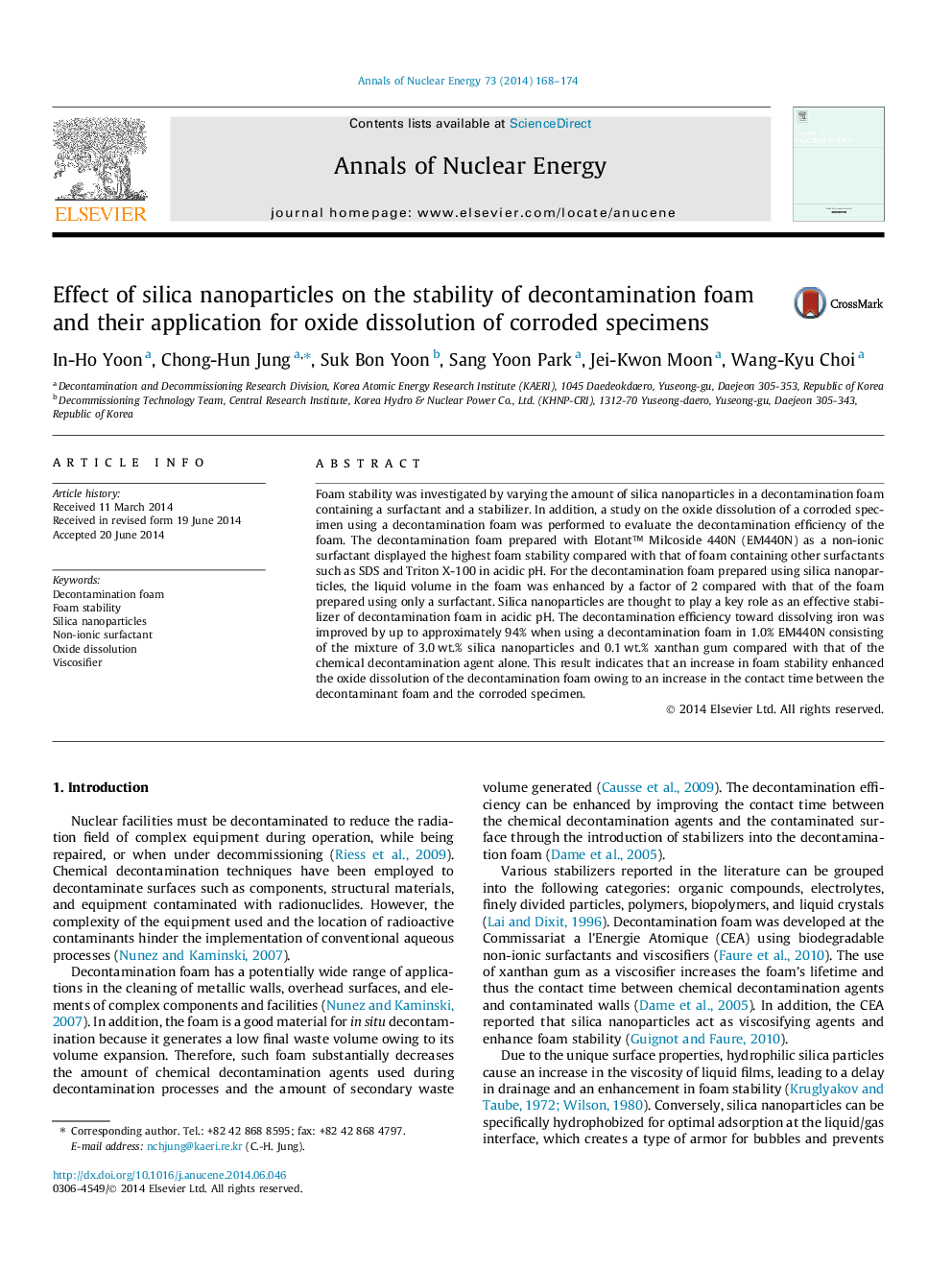| کد مقاله | کد نشریه | سال انتشار | مقاله انگلیسی | نسخه تمام متن |
|---|---|---|---|---|
| 8069084 | 1521125 | 2014 | 7 صفحه PDF | دانلود رایگان |
عنوان انگلیسی مقاله ISI
Effect of silica nanoparticles on the stability of decontamination foam and their application for oxide dissolution of corroded specimens
ترجمه فارسی عنوان
اثر نانوذرات سیلیس بر پایداری فساد ضد زنگ زدگی و کاربرد آنها برای انحلال اکسید نمونه های خورنده
دانلود مقاله + سفارش ترجمه
دانلود مقاله ISI انگلیسی
رایگان برای ایرانیان
کلمات کلیدی
فوم ضدعفونی کننده، پایداری فوم نانوذرات سیلیکا، سورفاکتانت غیر یونی انحلال اکسید، ویسکوزیته کننده،
موضوعات مرتبط
مهندسی و علوم پایه
مهندسی انرژی
مهندسی انرژی و فناوری های برق
چکیده انگلیسی
Foam stability was investigated by varying the amount of silica nanoparticles in a decontamination foam containing a surfactant and a stabilizer. In addition, a study on the oxide dissolution of a corroded specimen using a decontamination foam was performed to evaluate the decontamination efficiency of the foam. The decontamination foam prepared with Elotant⢠Milcoside 440N (EM440N) as a non-ionic surfactant displayed the highest foam stability compared with that of foam containing other surfactants such as SDS and Triton X-100 in acidic pH. For the decontamination foam prepared using silica nanoparticles, the liquid volume in the foam was enhanced by a factor of 2 compared with that of the foam prepared using only a surfactant. Silica nanoparticles are thought to play a key role as an effective stabilizer of decontamination foam in acidic pH. The decontamination efficiency toward dissolving iron was improved by up to approximately 94% when using a decontamination foam in 1.0% EM440N consisting of the mixture of 3.0 wt.% silica nanoparticles and 0.1 wt.% xanthan gum compared with that of the chemical decontamination agent alone. This result indicates that an increase in foam stability enhanced the oxide dissolution of the decontamination foam owing to an increase in the contact time between the decontaminant foam and the corroded specimen.
ناشر
Database: Elsevier - ScienceDirect (ساینس دایرکت)
Journal: Annals of Nuclear Energy - Volume 73, November 2014, Pages 168-174
Journal: Annals of Nuclear Energy - Volume 73, November 2014, Pages 168-174
نویسندگان
In-Ho Yoon, Chong-Hun Jung, Suk Bon Yoon, Sang Yoon Park, Jei-Kwon Moon, Wang-Kyu Choi,
